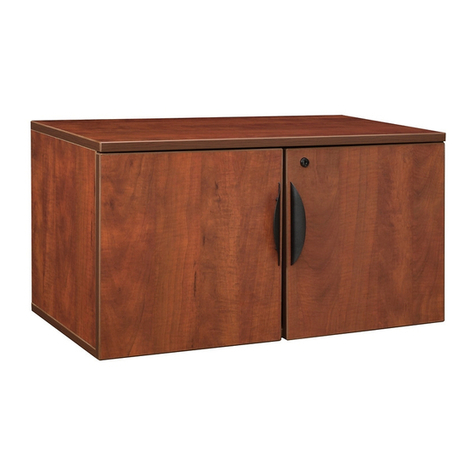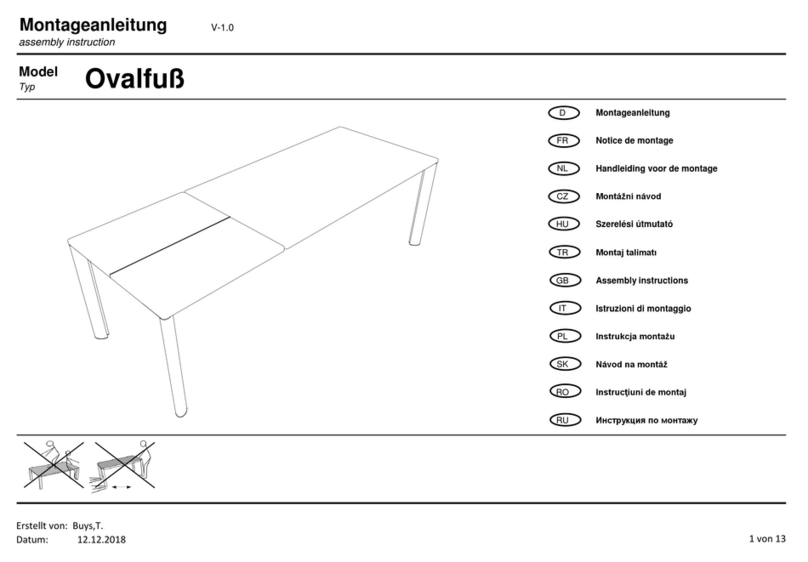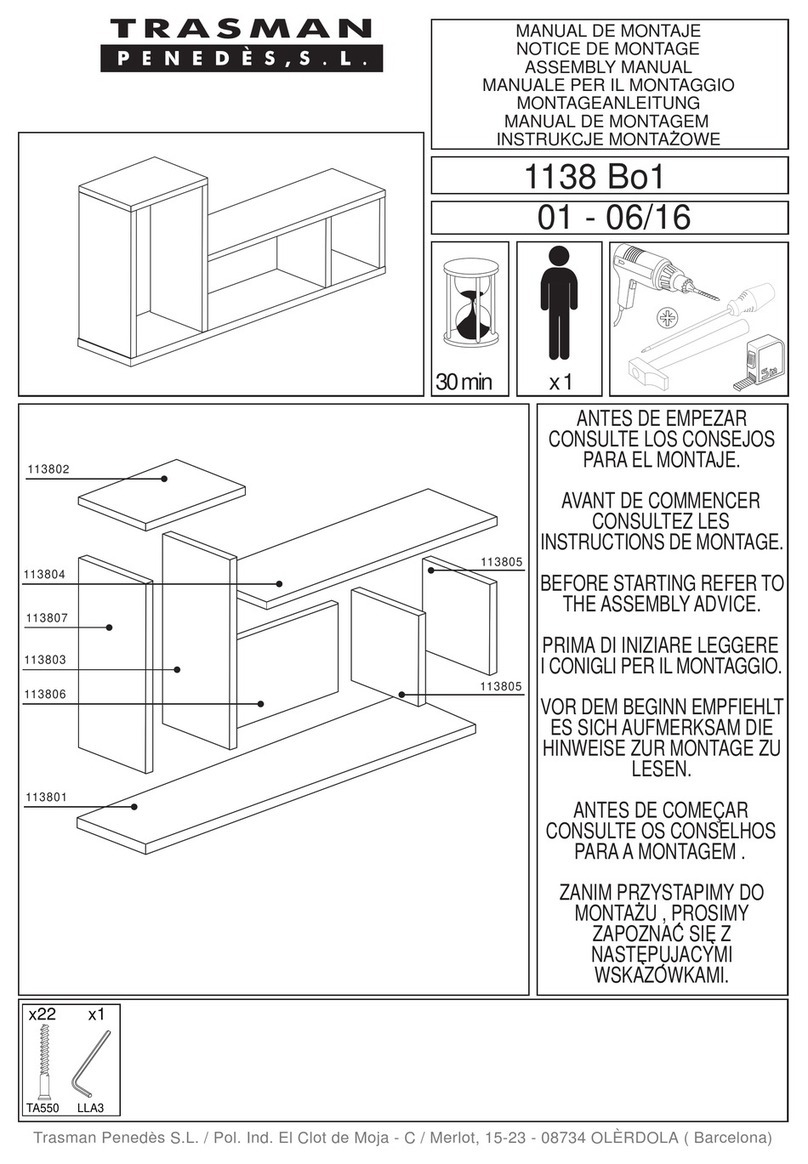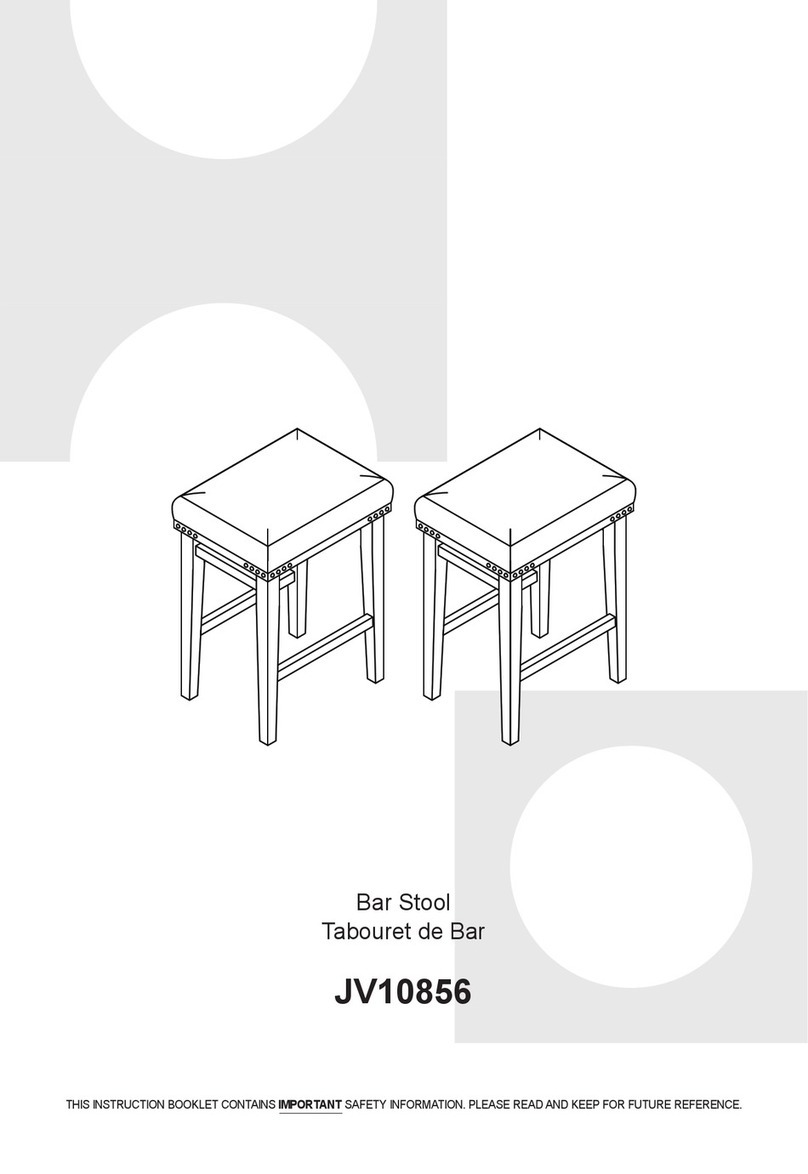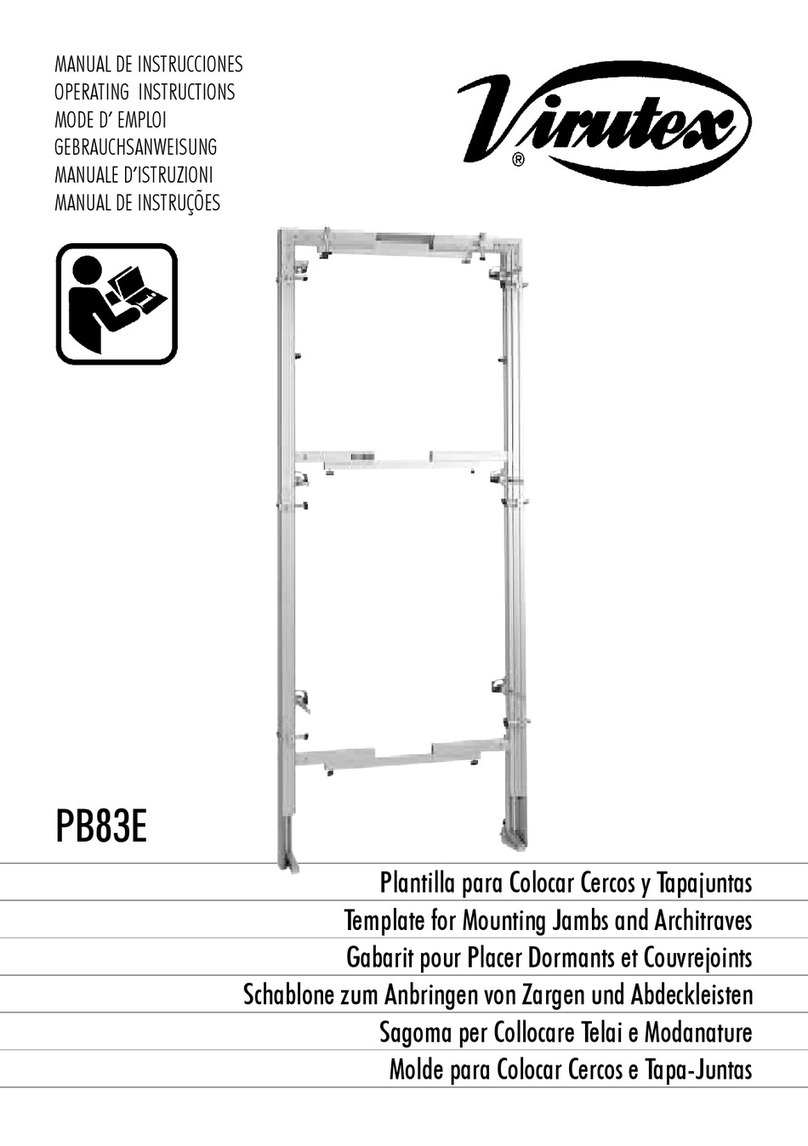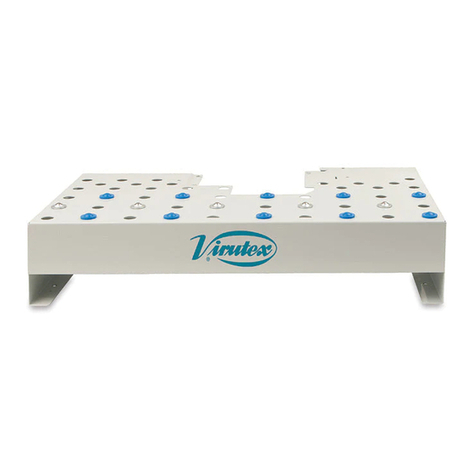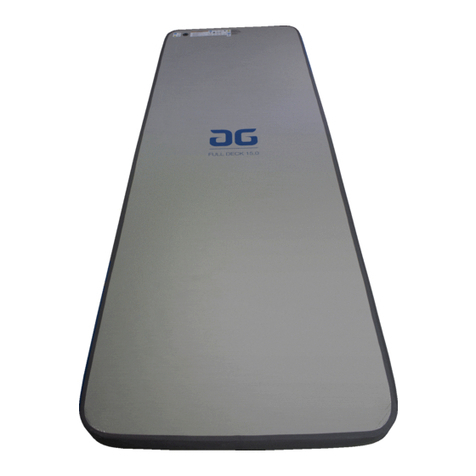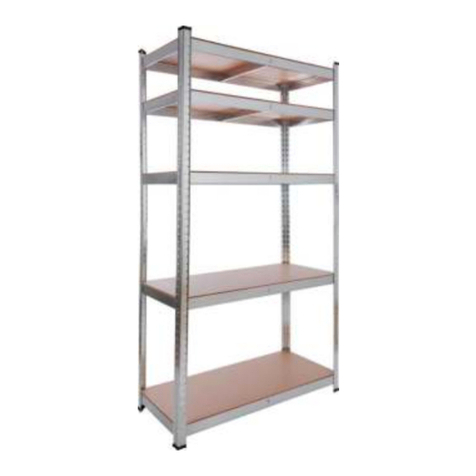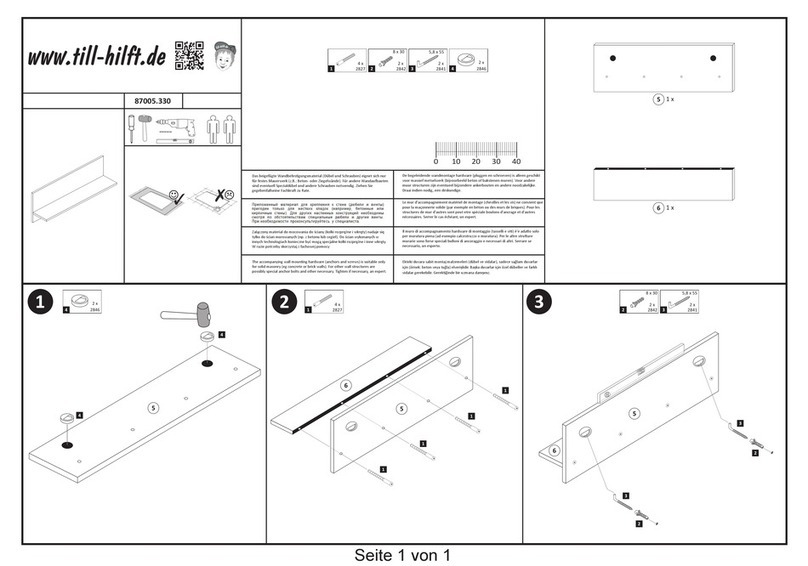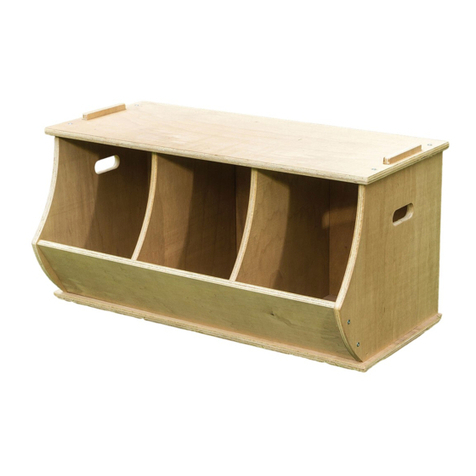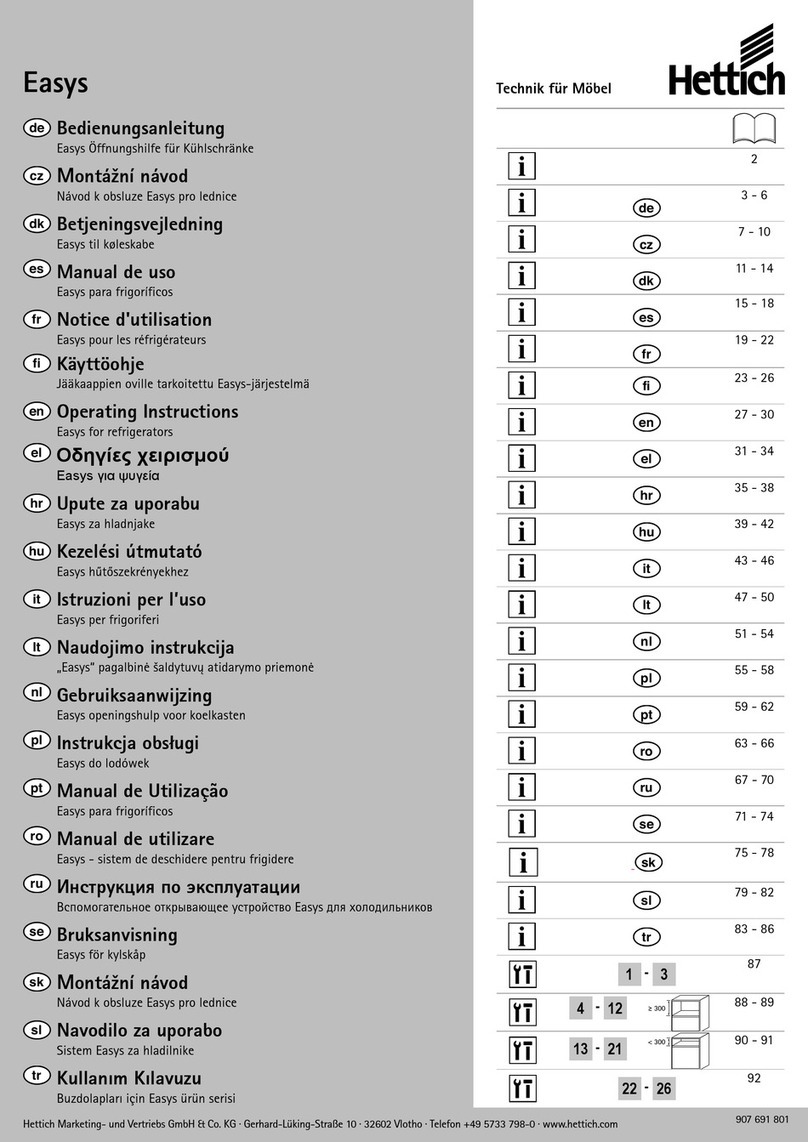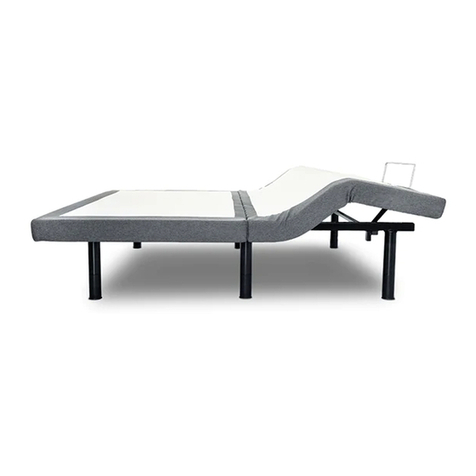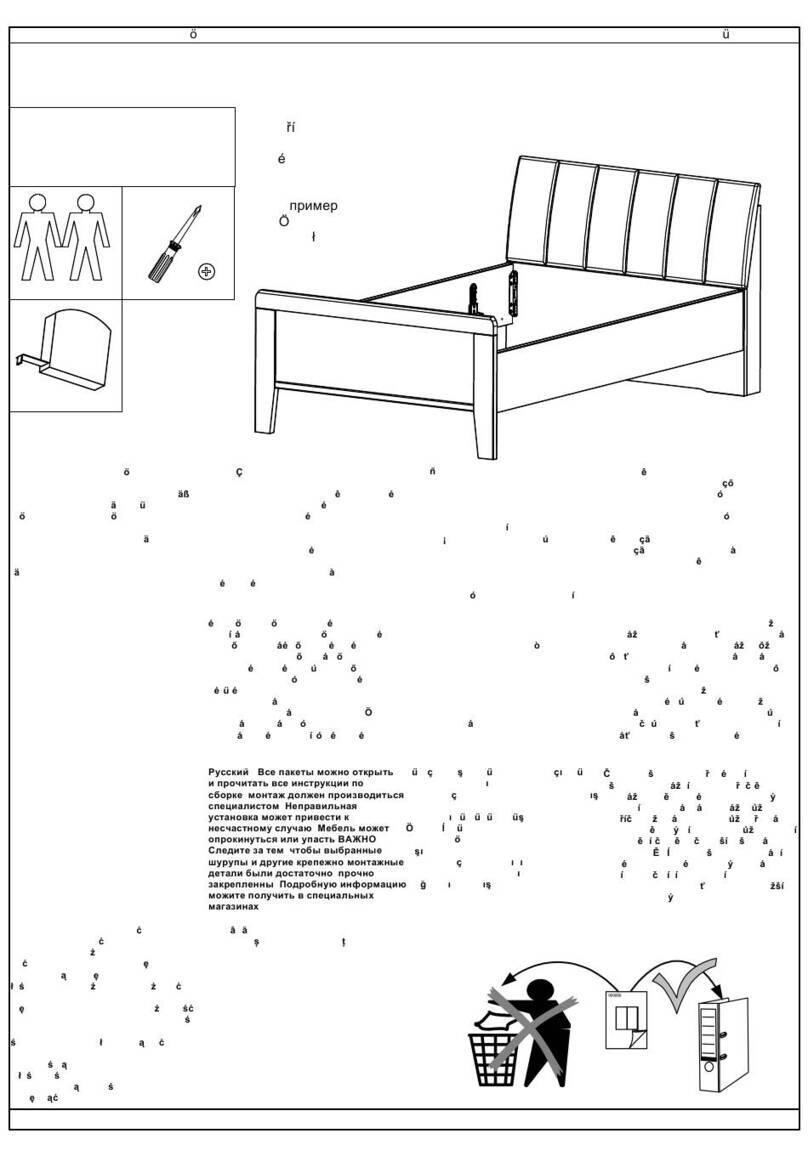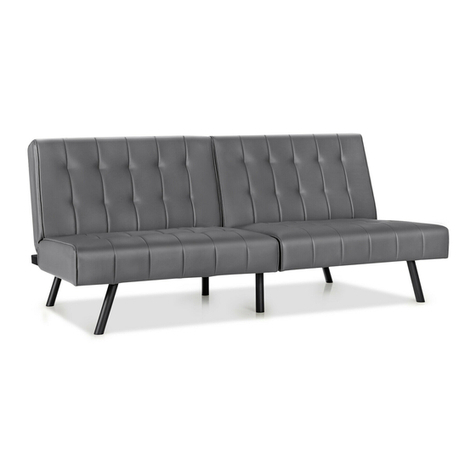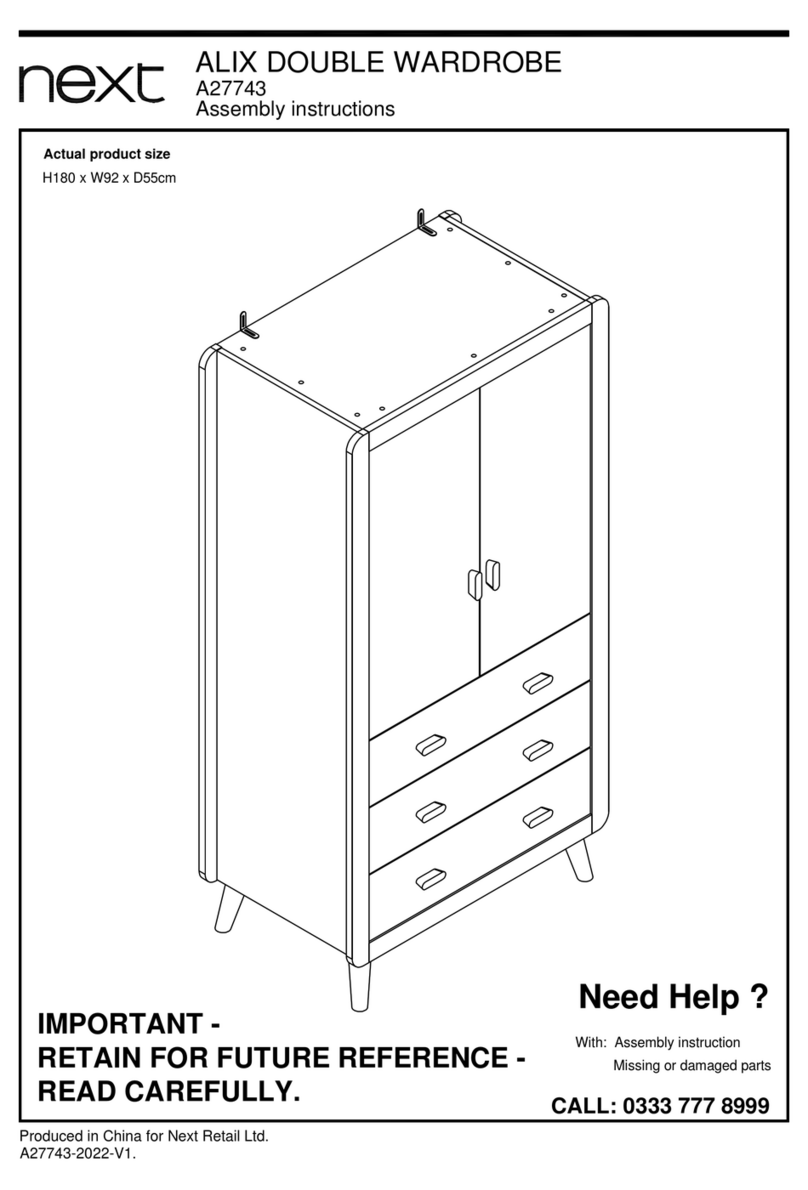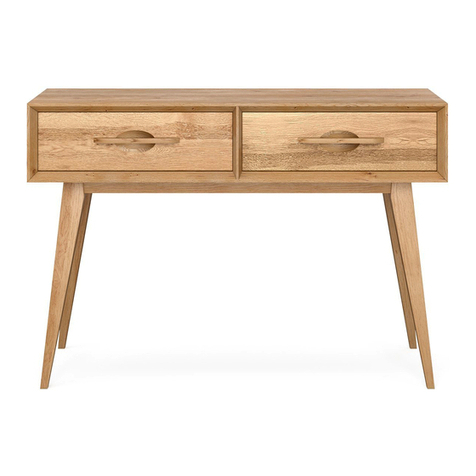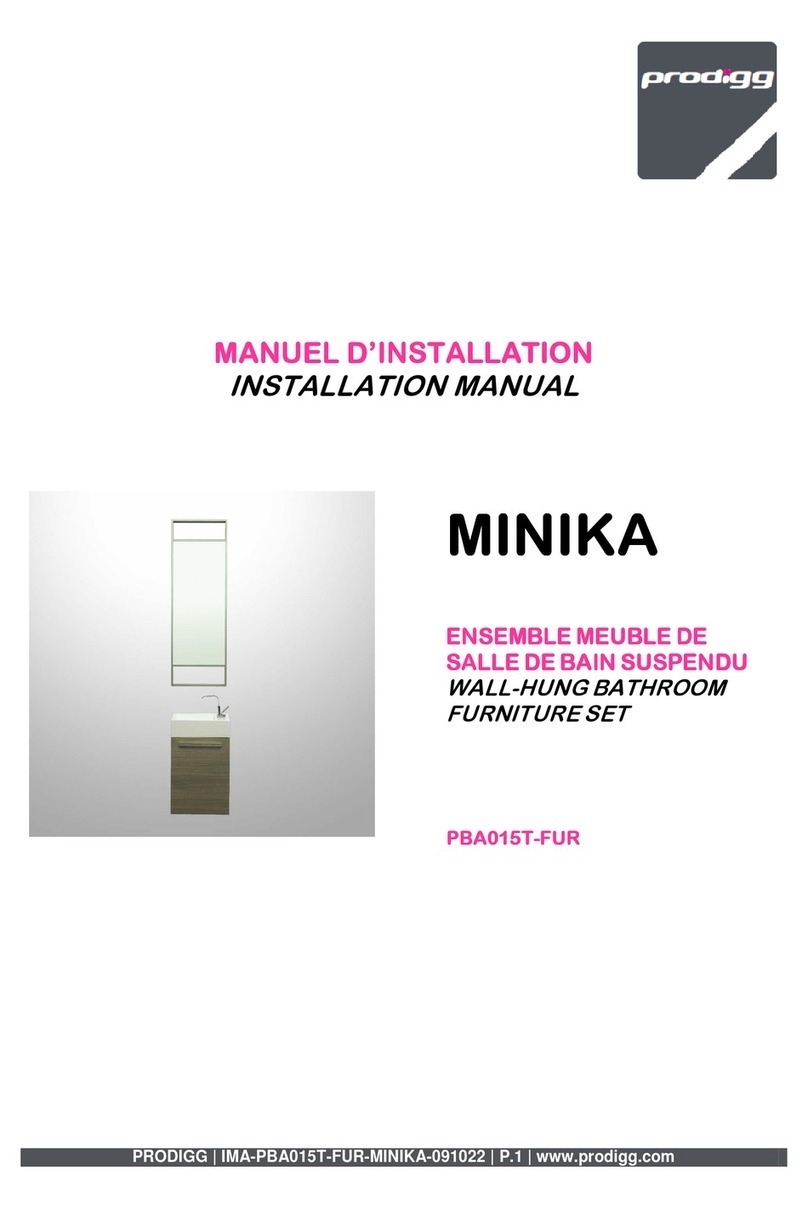
10
• Pousser le panneau contre le chant situé sur le
rouleau de pression de façon à ce que le mouvement
de rotation de celui-ci marque la vitesse d’avance
du panneau et l’accompagner avec les deux mains
jusqu’à la fin du placage.
• Fermer l’interrupteur d’avance (IJ, Fig. 2), sur la
PEB200, ou bien placer la poignée (IK, Fig. 2) en
position (0), sur la PEB250.
Si le travail avec la machine est terminé, fermer
également l’interrupteur général (IG, Fig. 2). Selon
le modèle.
8. PLACAGE DE PIÈCES CIRCULAIRES
Réglages préalables:
Surélever la plaqueuse PEB200/PEB250 pour que le
chant encollé sorte au ras de la table:
• Pour plaquer des panneaux circulaires, il faut monter
la plaqueuse PEB200/PEB250 dans la position de la
(Fig. 2), mais en posant les accessoires (T et U, Fig. 3,
8 et 9) sous la machine pour la surélever.
Poser les accessoires de table:
• Il faut convenablement répartir certains accessoires
de table (S, Fig. 10) pour pouvoir appuyer le panneau
pendant le placage, sans que l’excédent de chant
inférieur ne bute contre ceux-ci lors de l'avance
du panneau.
Retirer les guides d’appui:
• Il faut retirer les guides d’entrée et de sortie (M et
L, Fig. 2) de la table, en dévissant les vis (R, Fig. 2).
Retirer le presseur:
• Le presseur (F, Fig. 1) ne doit pas être utilisé pour
plaquer des panneaux circulaires. Il faut le démonter
et le remonter en position inverse (F, Fig. 10) pour
éviter qu’il se perde.
Placage:
Quand la plaqueuse PEB200/PEB250 est prête à
plaquer des chants, comme cela est expliqué au
paragraphe 6, la marche à suivre pour plaquer un
panneau circulaire est la suivante:
• Sur la PEB200, actionner l'interrupteur d'avance
(IJ, Fig. 2) qui se trouve sur la poignée de la machine.
Uniquement sur la PEB250, tourner la poignée (IK,
Fig. 2), puis sélectionner la vitesse de travail.
• Attendre quelques secondes pour que la colle monte
du bac jusqu’au rouleau encolleur.
• Poser le panneau sur les accessoires de table (S,
Fig. 3, 10 et 12) et face au rouleau de pression (N,
Fig. 7 et 10).
• Introduire le chant entre les guides jusqu'à ce qu’il
atteigne le rouleau d’avance qui entraînera le chant
dûment encollé jusqu’à sa sortie sur le rouleau de
pression.
• Pousser le panneau contre le chant situé sur le
rouleau de pression (N, Fig. 7 et 10) de façon à ce
que le mouvement de rotation de celui-ci marque
la vitesse d’avance du panneau.
• Accompagner le panneau jusqu’au second rouleau et
plaquer le reste du panneau en le faisant rouler entre
les deux rouleaux (Fig. 11) jusqu’à la fin du placage.
• Fermer l’interrupteur d’avance (IJ, Fig. 2), sur la
PEB200, ou bien placer la poignée (IK, Fig. 2) en
position (0), sur la PEB250.
• Si le travail avec la machine est terminé, fermer
également l’interrupteur général (IG, Fig. 2).
9. PLACAGE DE PETITES PIÈCES AUX FORMES
CURVILIGNES
Il faut faire les mêmes réglages que pour le placage
de pièces circulaires mais aussi:
Réglages supplémentaires:
Retirer le rouleau de pression auxiliaire et son axe:
• À l'aide d'un tournevis, retirer la bague de sécurité
(IL, Fig. 8) qui retient le rouleau.
• Retirer le rouleau (P, Fig. 8), de même que l'axe du
rouleau (IM, Fig. 8), en le dévissant à l'aide d'une tige
de 4 mm que l'on introduit dans le trou de celui-ci.
Poser les accessoires arrière:
• Pour certaines pièces, il peut être nécessaire de
poser certains accessoires arrière (V, Fig. 2, 3, 11 et
12), dans la partie arrière de sortie du panneau et
aux positions convenables pour pouvoir l'appuyer
pendant le placage, sans que l'excédent de chant
inférieur bute contre ceux-ci en avançant.
Placage:
Quand la plaqueuse PEB200/PEB250 est prête à
plaquer des chants, comme cela est expliqué au
paragraphe 6, la marche à suivre pour plaquer un
petit panneau aux formes curvilignes est la suivante:
• Sur la PEB200, actionner l'interrupteur d'avance
(IJ, Fig. 2) qui se trouve sur la poignée de la machine,
ou bien uniquement sur la PB250, tourner la poignée
(IK, Fig. 2), puis sélectionner la vitesse de travail.
• Attendre quelques secondes pour que la colle monte
du bac jusqu’au rouleau encolleur.
• Poser le panneau sur les accessoires de table (S,
Fig. 3, 10 et 12) et face au rouleau de pression (N,
Fig. 7 et 10).
• Introduire le chant entre les guides jusqu'à ce qu’il
atteigne le rouleau d’avance qui entraînera le chant
dûment encollé jusqu’à sa sortie sur le rouleau de
pression.
